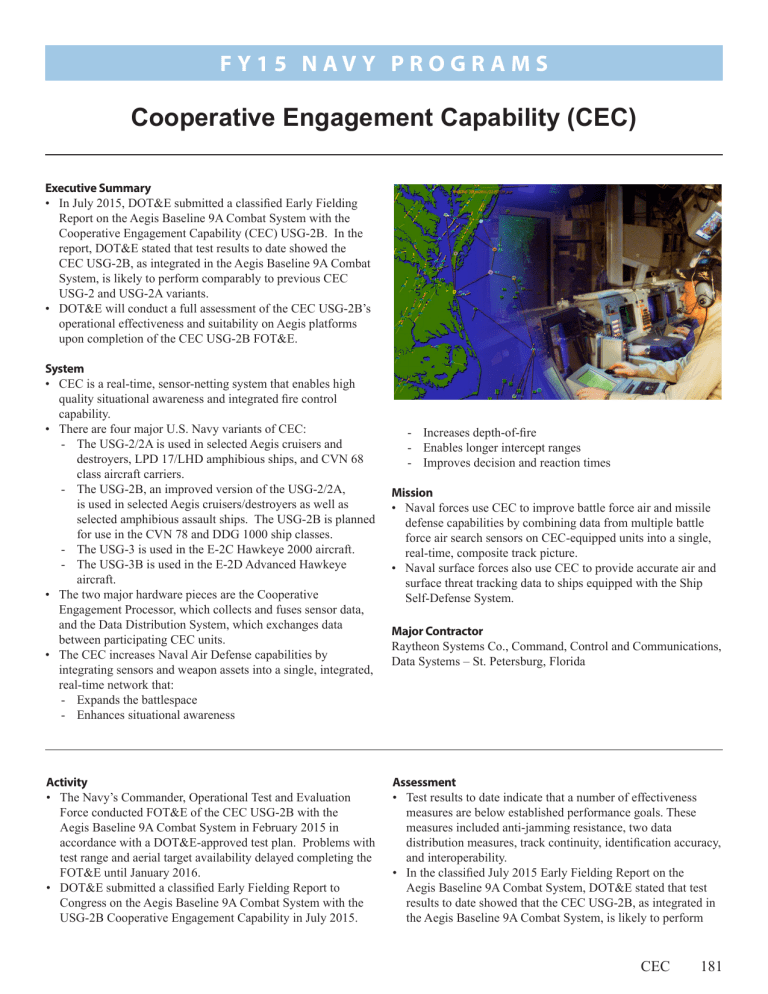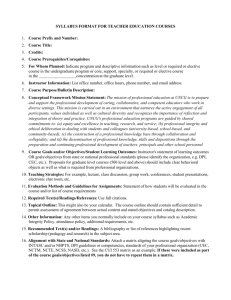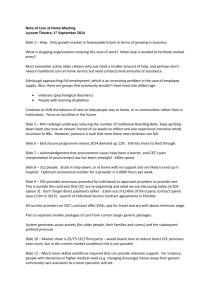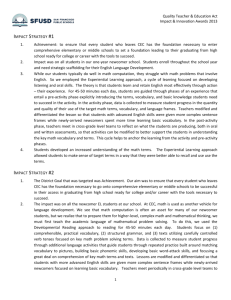Cooperative Engagement Capability (CEC)

F Y 1 5 N A V Y P R O G R A M S
Cooperative Engagement Capability (CEC)
Executive Summary
• In July 2015, DOT&E submitted a classified Early Fielding
Report on the Aegis Baseline 9A Combat System with the
Cooperative Engagement Capability (CEC) USG-2B. In the report, DOT&E stated that test results to date showed the
CEC USG-2B, as integrated in the Aegis Baseline 9A Combat
System, is likely to perform comparably to previous CEC
USG-2 and USG-2A variants.
• DOT&E will conduct a full assessment of the CEC USG-2B’s operational effectiveness and suitability on Aegis platforms upon completion of the CEC USG-2B FOT&E.
System
• CEC is a real-time, sensor-netting system that enables high quality situational awareness and integrated fire control capability.
• There are four major U.S. Navy variants of CEC:
- The USG-2/2A is used in selected Aegis cruisers and destroyers, LPD 17/LHD amphibious ships, and CVN 68 class aircraft carriers.
- The USG-2B, an improved version of the USG-2/2A, is used in selected Aegis cruisers/destroyers as well as selected amphibious assault ships. The USG-2B is planned for use in the CVN 78 and DDG 1000 ship classes.
- The USG-3 is used in the E-2C Hawkeye 2000 aircraft.
- The USG-3B is used in the E-2D Advanced Hawkeye aircraft.
• The two major hardware pieces are the Cooperative
Engagement Processor, which collects and fuses sensor data, and the Data Distribution System, which exchanges data between participating CEC units.
• The CEC increases Naval Air Defense capabilities by integrating sensors and weapon assets into a single, integrated, real-time network that:
- Expands the battlespace
- Enhances situational awareness
Increases depth-of-fire
- Enables longer intercept ranges
- Improves decision and reaction times
Mission
• Naval forces use CEC to improve battle force air and missile defense capabilities by combining data from multiple battle force air search sensors on CEC-equipped units into a single, real-time, composite track picture.
• Naval surface forces also use CEC to provide accurate air and surface threat tracking data to ships equipped with the Ship
Self-Defense System.
Major Contractor
Raytheon Systems Co., Command, Control and Communications,
Data Systems – St. Petersburg, Florida
Activity
• The Navy’s Commander, Operational Test and Evaluation
Force conducted FOT&E of the CEC USG-2B with the
Aegis Baseline 9A Combat System in February 2015 in accordance with a DOT&E-approved test plan. Problems with test range and aerial target availability delayed completing the
FOT&E until January 2016.
• DOT&E submitted a classified Early Fielding Report to
Congress on the Aegis Baseline 9A Combat System with the
USG-2B Cooperative Engagement Capability in July 2015.
Assessment
• Test results to date indicate that a number of effectiveness measures are below established performance goals. These measures included anti-jamming resistance, two data distribution measures, track continuity, identification accuracy, and interoperability.
• In the classified July 2015 Early Fielding Report on the
Aegis Baseline 9A Combat System, DOT&E stated that test results to date showed that the CEC USG-2B, as integrated in the Aegis Baseline 9A Combat System, is likely to perform
CEC 181
F Y 1 5 N A V Y P R O G R A M S comparably to previous CEC USG-2 variants. DOT&E will conduct a full assessment of the CEC USG-2B’s operational effectiveness and suitability upon completion of the CEC
USG-2B FOT&E.
• The CEC USG-2B cybersecurity testing conducted to date has not revealed any major deficiencies.
Recommendations
• Status of Previous Recommendations. The Navy has not satisfied the following previous recommendations to:
1. Demonstrate corrections to the problem that degrades the USG-3B CEC’s Track File Concurrence in a phase of
FOT&E.
2. Implement changes to the USG-3B CEC interface with the E-2D mission computer that would allow data from the E-2D’s APY-9 radar to be used by the USG-3B CEC without first requiring the creation of an E-2D Mission
Computer track.
3. Reassess the USG-3B CEC reliability requirement and whether the logistic supply system can support the demonstrated USG-3B CEC reliability.
4. Correct the cause of the electromagnetic interference between the USG-3B CEC and the E-2D radar altimeter and demonstrate the corrections in a phase of FOT&E.
5. Take action on the recommendations contained in
DOT&E’s classified report to Congress on the CEC
USG-3B FOT&E.
6. Update the CEC Test and Evaluation Master Plan to include details of:
▪ The second phase of the USG-3B FOT&E with the supersonic sea-skimming target scenario
▪ FOT&E of corrections made to the CEC USG-3B
▪ FOT&E of the CEC USG-2B with the Aegis Baseline 9
Combat System
▪ FOT&E of the CEC USG-2B with the
DDG 1000 Zumwalt Combat System
▪ FOT&E of the CEC USG-2B with the CVN 78 Combat
System
▪ FOT&E of USG-3B CEC to demonstrate the system’s ability to support the E-2D’s Theater Air and Missile
Defense and Battle Force Command and Control missions
▪ The test program supporting the Acceleration of
Mid-term Interoperability Improvements Project
• FY15 Recommendation.
1. The Navy should complete the FOT&E of the CEC
USG-2B with the Aegis Baseline 9 Combat System.
182 CEC







